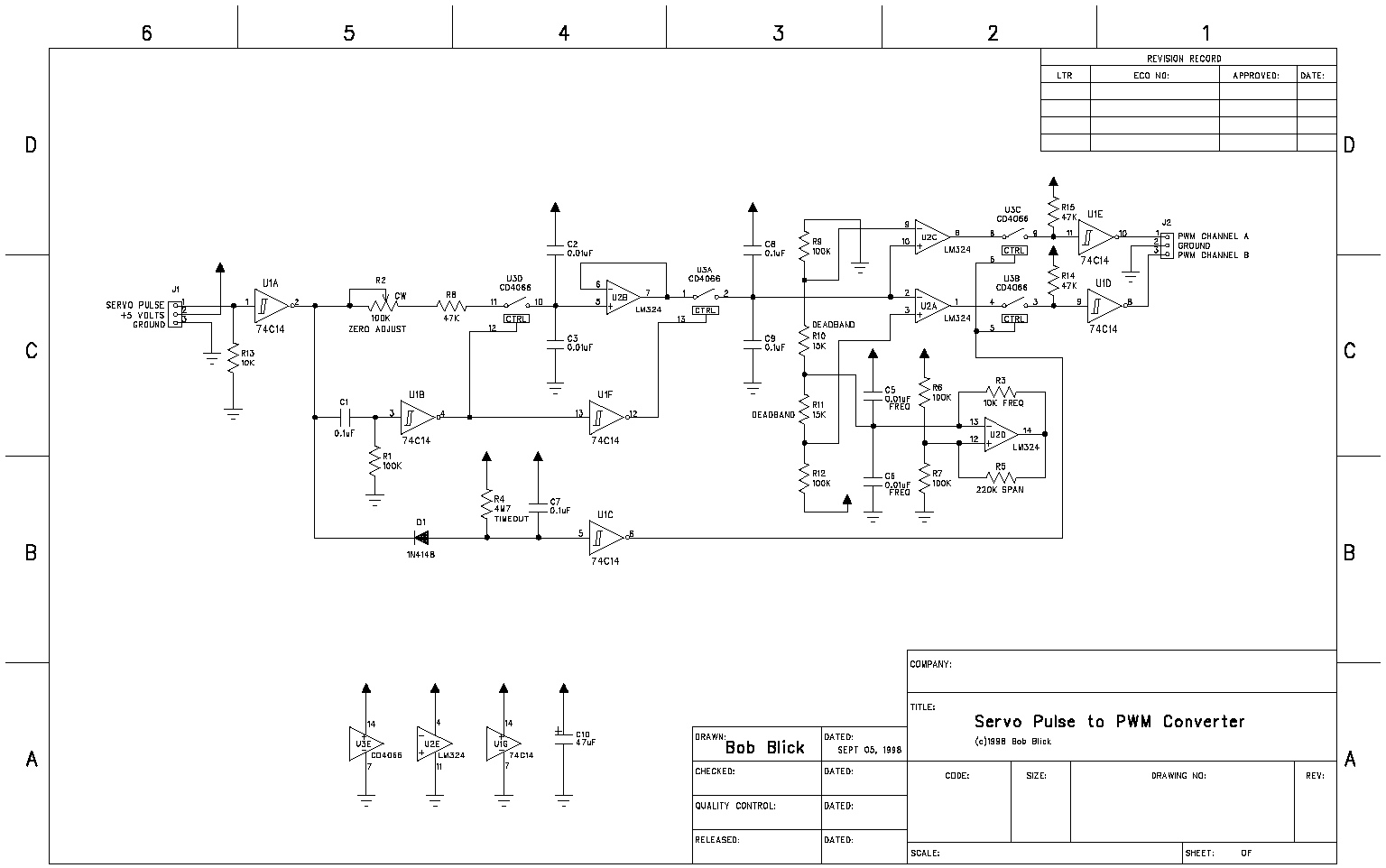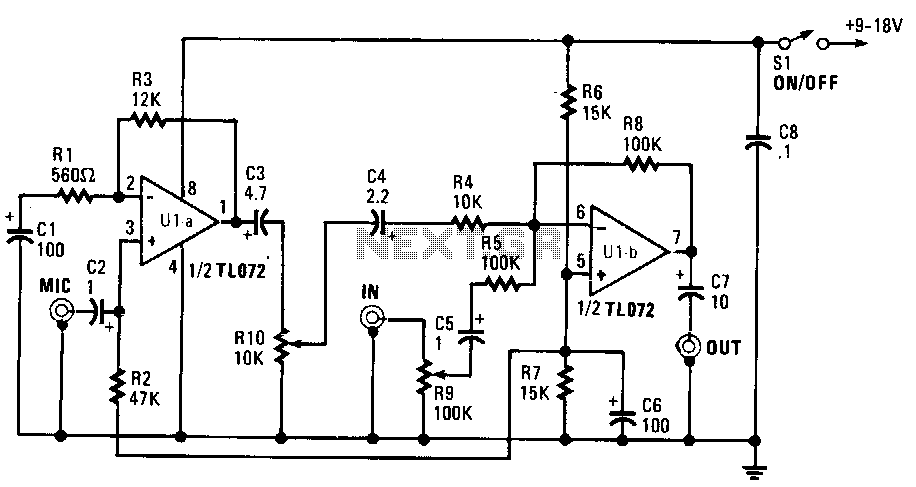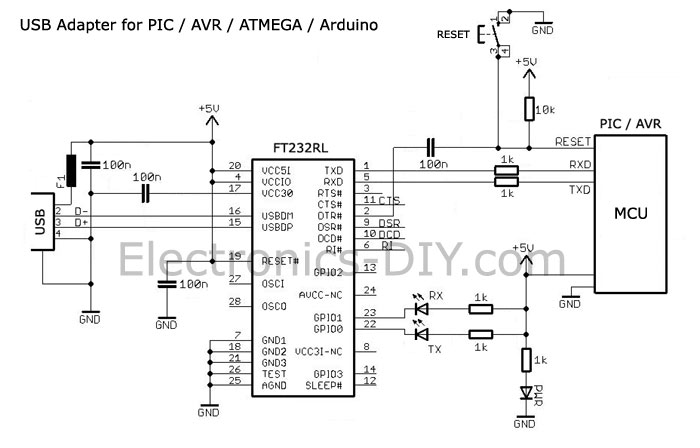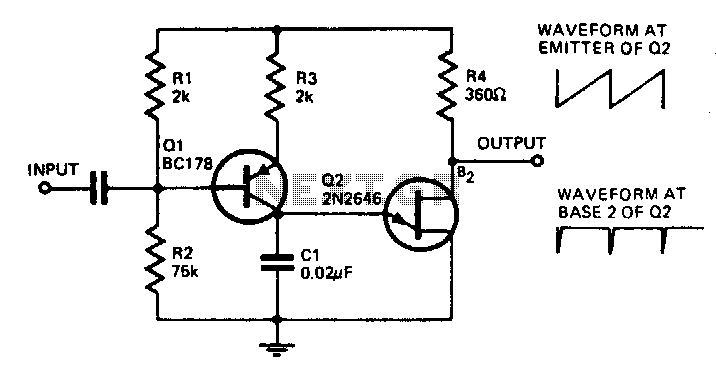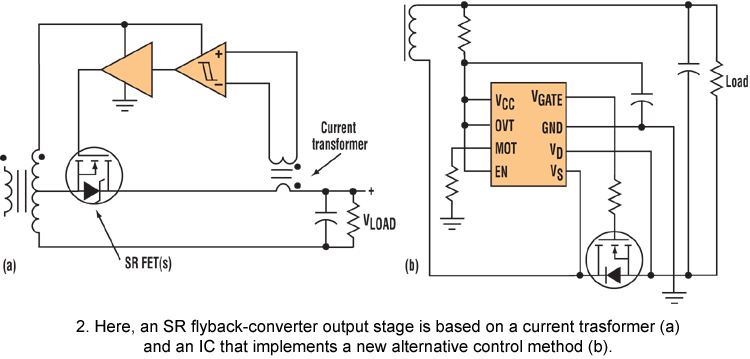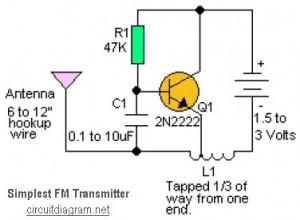
Simple RS 232 Level Converter
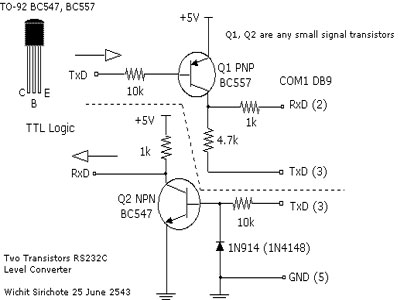
When connecting a microcontroller project to a COM port on a PC, an RS-232 converter is required. Various chips can accomplish this task, such as the MAX232 and DS275. However, for a simple and cost-effective RS-232 converter, the following circuit may be useful. The design was created by Wichit Sirichote. The circuit diagram utilizes two small signal transistors, one NPN and one PNP. A dashed line separates the transmitter and receiver circuits. For those who only need the transmitter circuit, the above circuit can be used along with the ground (GND) signal. The RS-232C standard specifies that a logic '1' is represented by voltages between -3V and -12V, while a logic '0' is represented by voltages between +3V and +12V. The transmitter circuit employs a PNP transistor (BC557). In the mark state, the TxD signal is logic '1', which turns off Q1. Consequently, TxD (pin 3) provides -9V (depending on the converter chip used for COM1) to RxD (pin 2). During the space state, the TxD control signal changes to logic '0', activating Q1 and feeding approximately +5V to RxD (pin 2). Thus, while data is being transmitted, TxD (pin 3) must remain stable at -9V.
The RS-232 converter circuit designed by Wichit Sirichote is a practical solution for interfacing microcontrollers with serial communication ports on PCs. The circuit primarily consists of two transistors: a PNP transistor (BC557) for the transmitter and an NPN transistor for signal reception. The operation of the transmitter circuit is crucial for ensuring proper voltage levels are maintained during data transmission.
In the transmitter section, when the TxD signal is logic '1', the PNP transistor Q1 is turned off, resulting in a negative voltage output of approximately -9V at the RxD pin. This is in accordance with the RS-232 standard, which defines a logic '1' as a negative voltage. Conversely, when the TxD signal transitions to logic '0', Q1 is activated, allowing a positive voltage of about +5V to be sent to the RxD pin. This voltage level corresponds to a logic '0' in the RS-232 protocol.
The dashed line in the circuit diagram indicates the separation between the transmitter and receiver sections, which allows for independent operation. Users who require only the transmitter functionality can utilize this design without needing the receiver part. The circuit is straightforward, making it suitable for hobbyists and professionals seeking an efficient and economical way to implement RS-232 communication in their microcontroller projects.
Overall, this RS-232 converter circuit serves as a reliable interface for microcontrollers, enabling effective communication with PC COM ports while adhering to the necessary voltage levels defined by the RS-232C standard. By employing simple components like the BC557 transistor, it provides an accessible solution for various electronic projects.When you need connect your Microcontroller Project to COM port in PC you need RS 232 converter. There are many chip to solve the problem like MAX232, DS275 etc. But if you need simple and chep for RS 232 converter, i though this circuit will be usefull for you. The design made by Wichit Sirichote. "A circuit diagram shown above was used two small signal transistor, NPN and PNP transistors. Dash line separate transmitter and receiver circuit. For those who need only transmitter circuit can use above circuit (and GND (5) signal ). Technically the RS232C is -3V to -12V for logic `1` and +3V to +12V for logic `0`. The transmitter circuit uses PNP transistor, BC557. While in mark state the TxD signal is logic `1`, Q1 turns off. TxD (pin3) then provides -9V (depends on what converter chip being used for COM1, say) to RxD (pin2). For space state, TxD control signal then becomes logic `0`, which turns on Q1, the approx. +5V is then fed to RxD (pin2). With this method, while sending data has being made, TxD (pin3) must stable at -9V, say" 🔗 External reference
The RS-232 converter circuit designed by Wichit Sirichote is a practical solution for interfacing microcontrollers with serial communication ports on PCs. The circuit primarily consists of two transistors: a PNP transistor (BC557) for the transmitter and an NPN transistor for signal reception. The operation of the transmitter circuit is crucial for ensuring proper voltage levels are maintained during data transmission.
In the transmitter section, when the TxD signal is logic '1', the PNP transistor Q1 is turned off, resulting in a negative voltage output of approximately -9V at the RxD pin. This is in accordance with the RS-232 standard, which defines a logic '1' as a negative voltage. Conversely, when the TxD signal transitions to logic '0', Q1 is activated, allowing a positive voltage of about +5V to be sent to the RxD pin. This voltage level corresponds to a logic '0' in the RS-232 protocol.
The dashed line in the circuit diagram indicates the separation between the transmitter and receiver sections, which allows for independent operation. Users who require only the transmitter functionality can utilize this design without needing the receiver part. The circuit is straightforward, making it suitable for hobbyists and professionals seeking an efficient and economical way to implement RS-232 communication in their microcontroller projects.
Overall, this RS-232 converter circuit serves as a reliable interface for microcontrollers, enabling effective communication with PC COM ports while adhering to the necessary voltage levels defined by the RS-232C standard. By employing simple components like the BC557 transistor, it provides an accessible solution for various electronic projects.When you need connect your Microcontroller Project to COM port in PC you need RS 232 converter. There are many chip to solve the problem like MAX232, DS275 etc. But if you need simple and chep for RS 232 converter, i though this circuit will be usefull for you. The design made by Wichit Sirichote. "A circuit diagram shown above was used two small signal transistor, NPN and PNP transistors. Dash line separate transmitter and receiver circuit. For those who need only transmitter circuit can use above circuit (and GND (5) signal ). Technically the RS232C is -3V to -12V for logic `1` and +3V to +12V for logic `0`. The transmitter circuit uses PNP transistor, BC557. While in mark state the TxD signal is logic `1`, Q1 turns off. TxD (pin3) then provides -9V (depends on what converter chip being used for COM1, say) to RxD (pin2). For space state, TxD control signal then becomes logic `0`, which turns on Q1, the approx. +5V is then fed to RxD (pin2). With this method, while sending data has being made, TxD (pin3) must stable at -9V, say" 🔗 External reference
